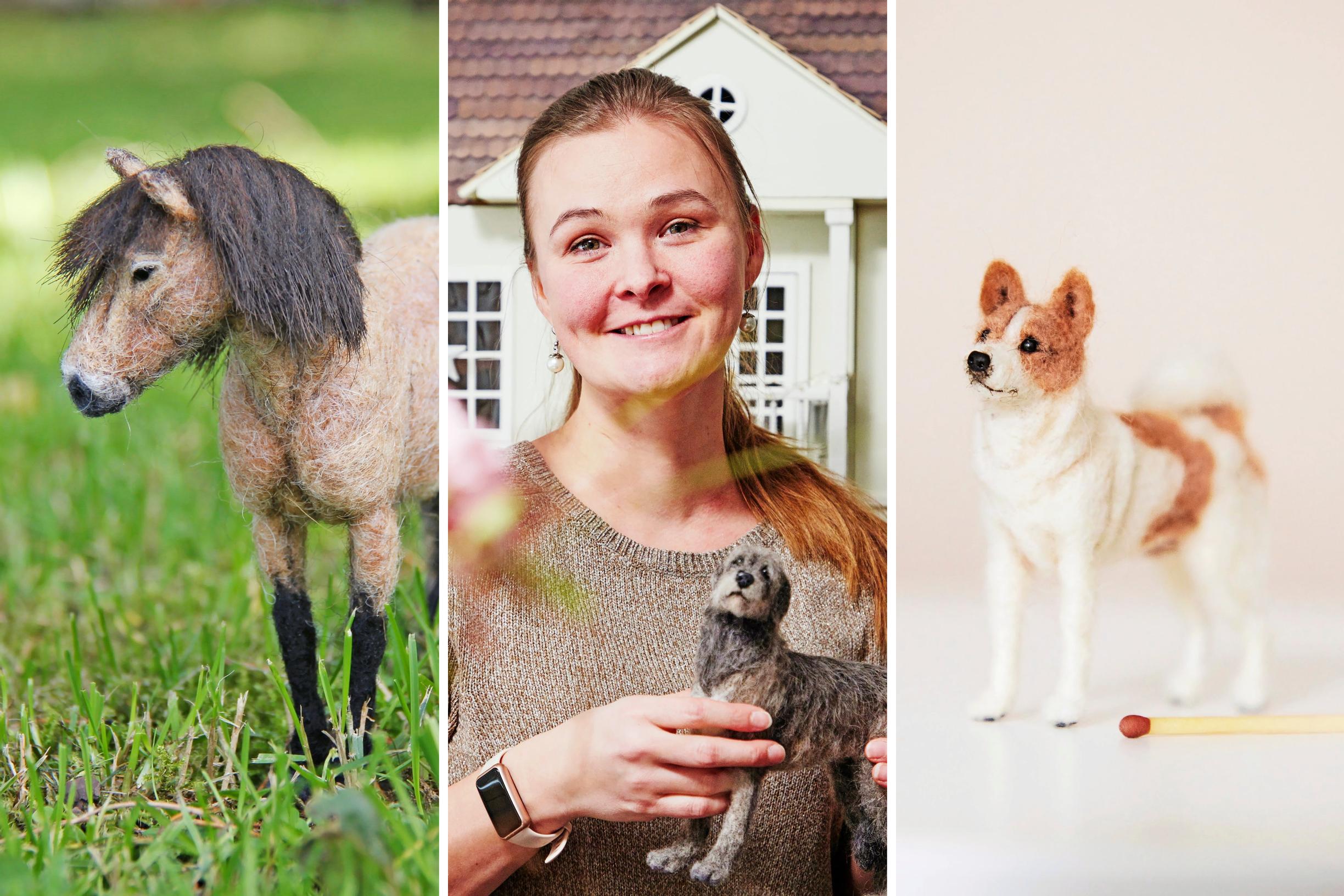
Emilia needle-felts remarkably expressive animals—each one represents the memory of a beloved pet
Emilia Eskola needle-felts incredibly detailed dogs, cats, and horses in miniature. Often, the process begins when Emilia receives an envelope containing the animal’s fur, photos, and a description of its personality.
Emilia Eskola needs precision and a seamless connection between eye and hand in her work as a dental technician. She also puts these skills to good use in her free time by needle-felting miniature, realistic-looking dogs and other animals. Often, a new project begins when she receives an envelope containing fur from someone’s beloved pet.
Emilia, what inspired you to start needle-felting animal figures?
I first saw felted animals as a teenager while visiting the Strömfors Ironworks with my family. I was in love with Swiss mountain dogs, and there was a wonderful felted Bernese Mountain Dog on display.
I hadn’t done many crafts before, but I bought a book about felted dogs and got excited. I find wool to be a pure and pleasant material. However, my first attempts were painful. I went through dozens of felting needles before I began shaping the wool as I intended.
These days, felting is a fun pastime for me. My first felted dog, a Karelian Bear Dog, was finished in 2008. Initially, I only made felted animals for relatives and friends. Now I take on commissioned pieces at a relaxed pace alongside my day job and family life.
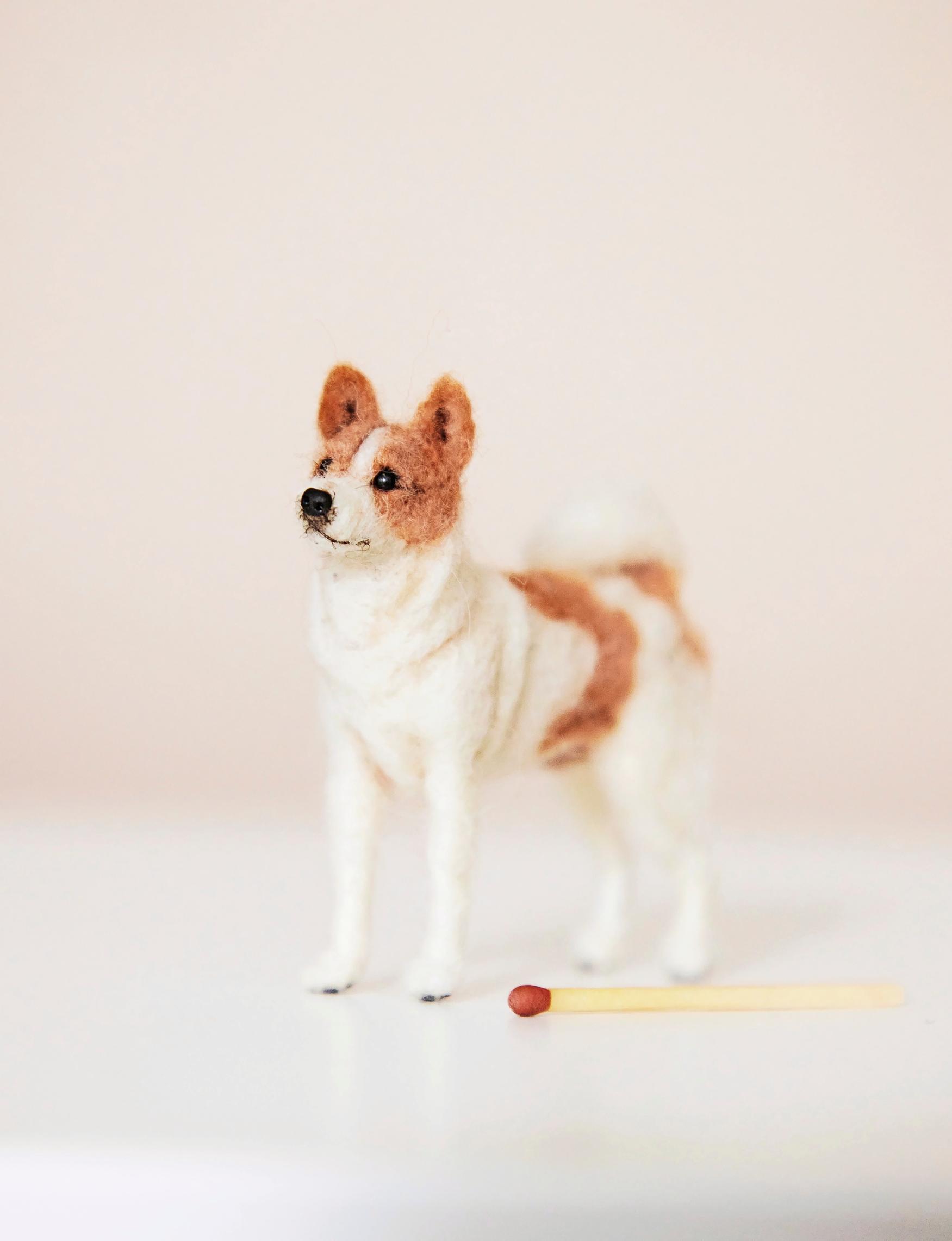
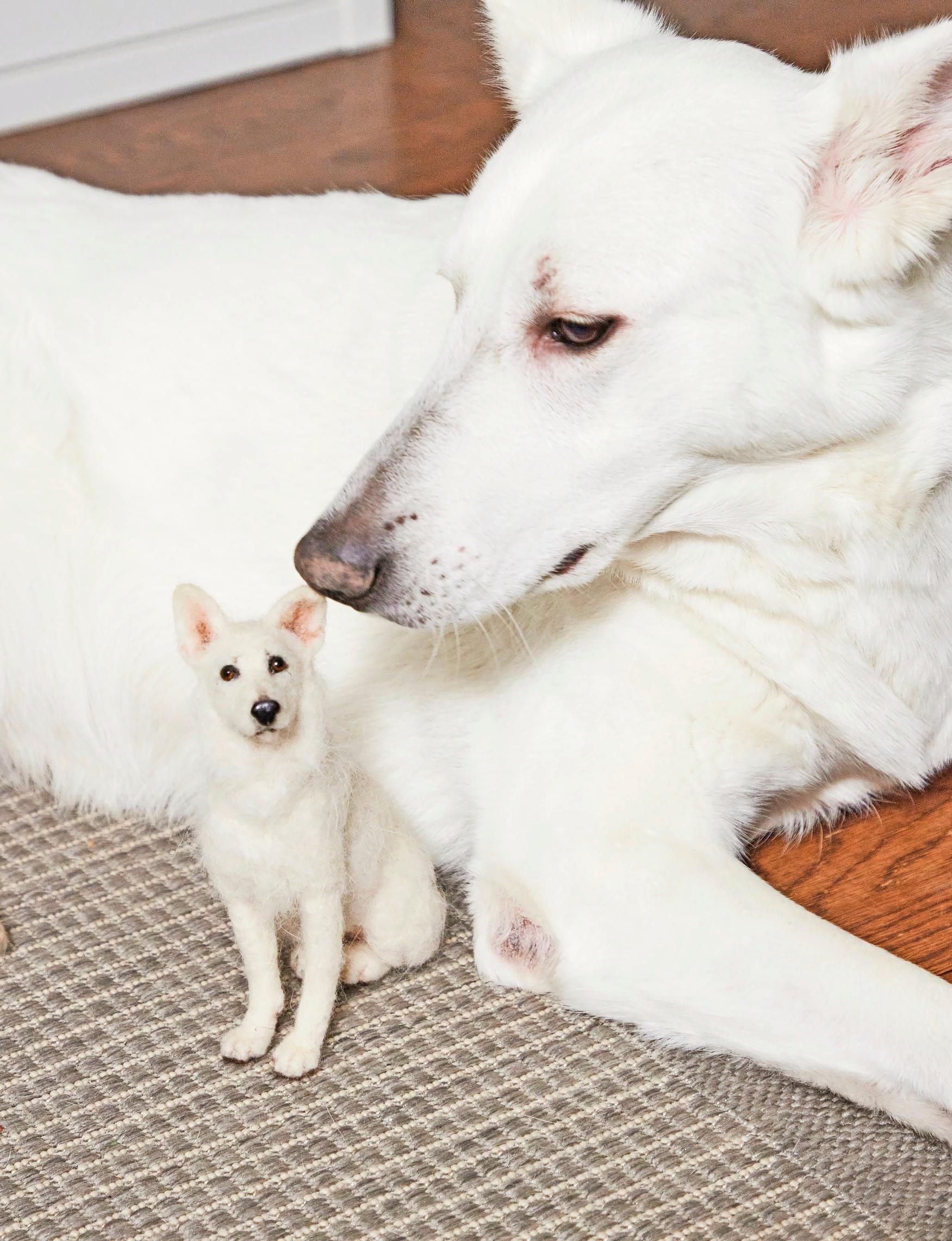
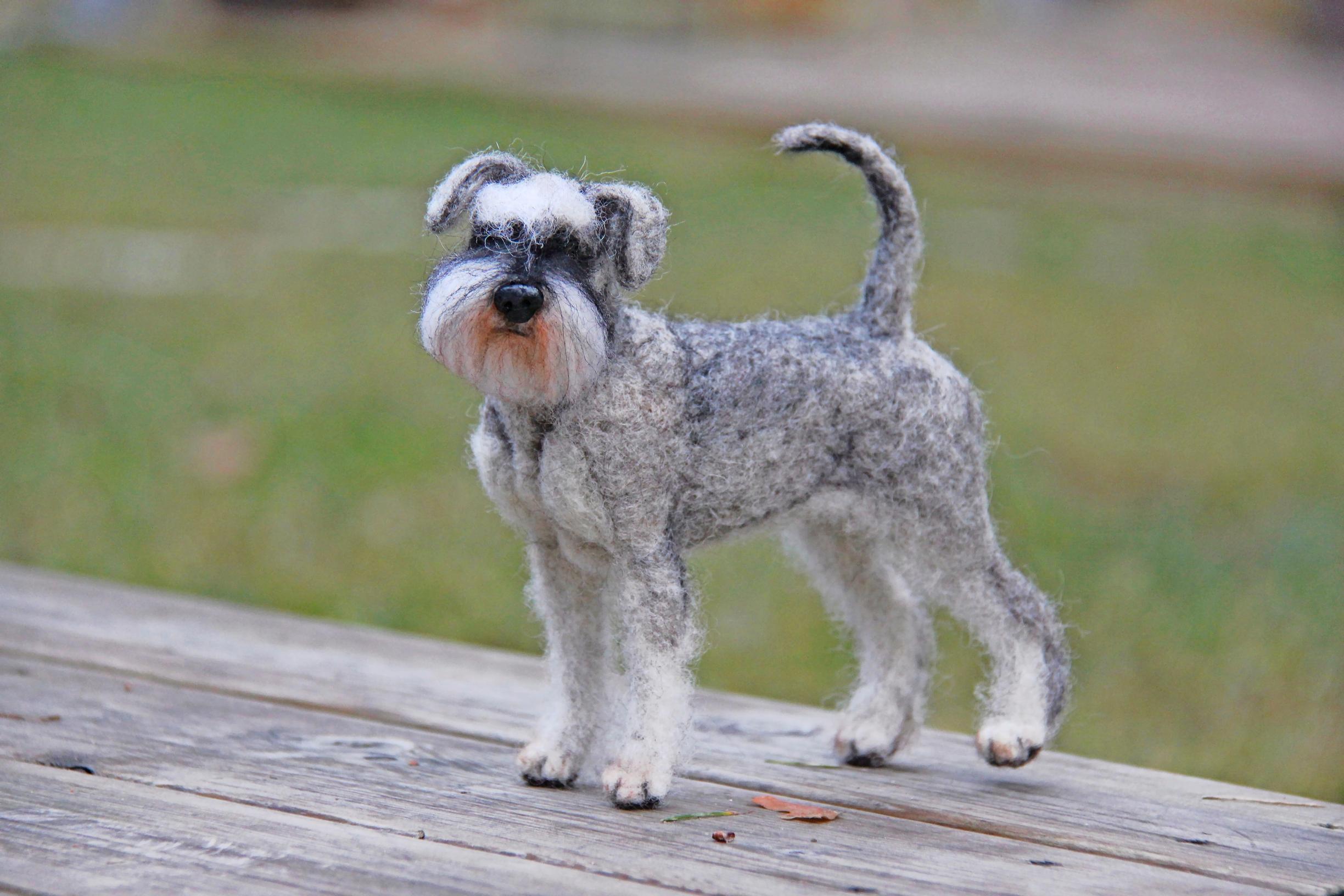
How do you create your pieces?
Before I start felting an animal, I receive photos from the customer. I also want to hear about the personality of the dog or other pet. Often, the piece is commissioned in memory of the pet after it has passed away.
Someone might send me a small tuft of their dog’s fur, which I use to liven up the felted dog’s coat. That way, it becomes even more personal for the recipient.
I always begin by drawing patterns or outlines so I can get the animal’s proportions right. My felted animals are small, just 3–20 centimeters tall. I shape a wire frame for them, which keeps their stance nice and sturdy.
I try to include each animal’s unique traits and natural movements or gestures. For example, a customer might ask me to make one ear a little floppy, just like their dog’s.
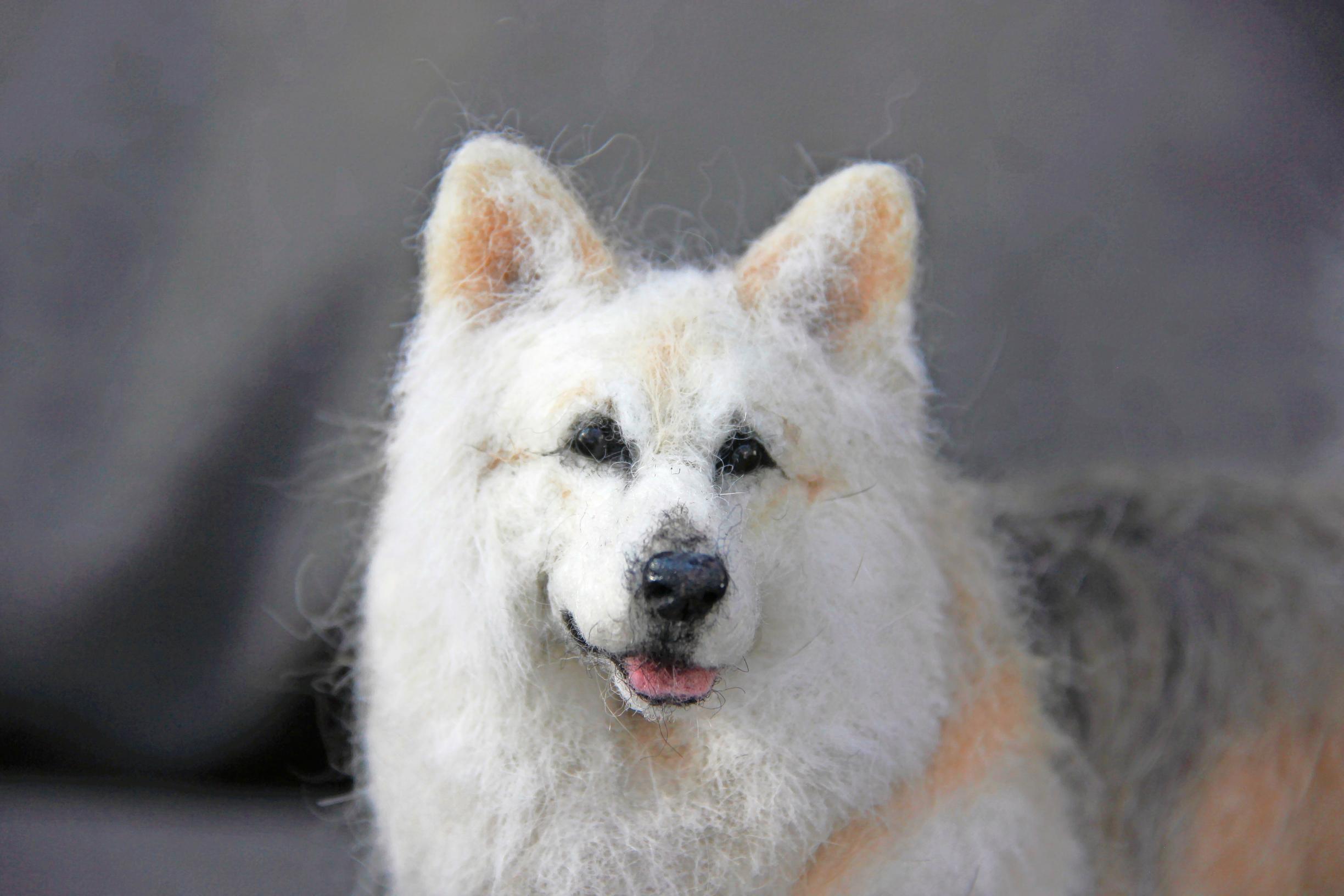
“I always try to capture each animal’s unique personality, natural movement, or gestures.”
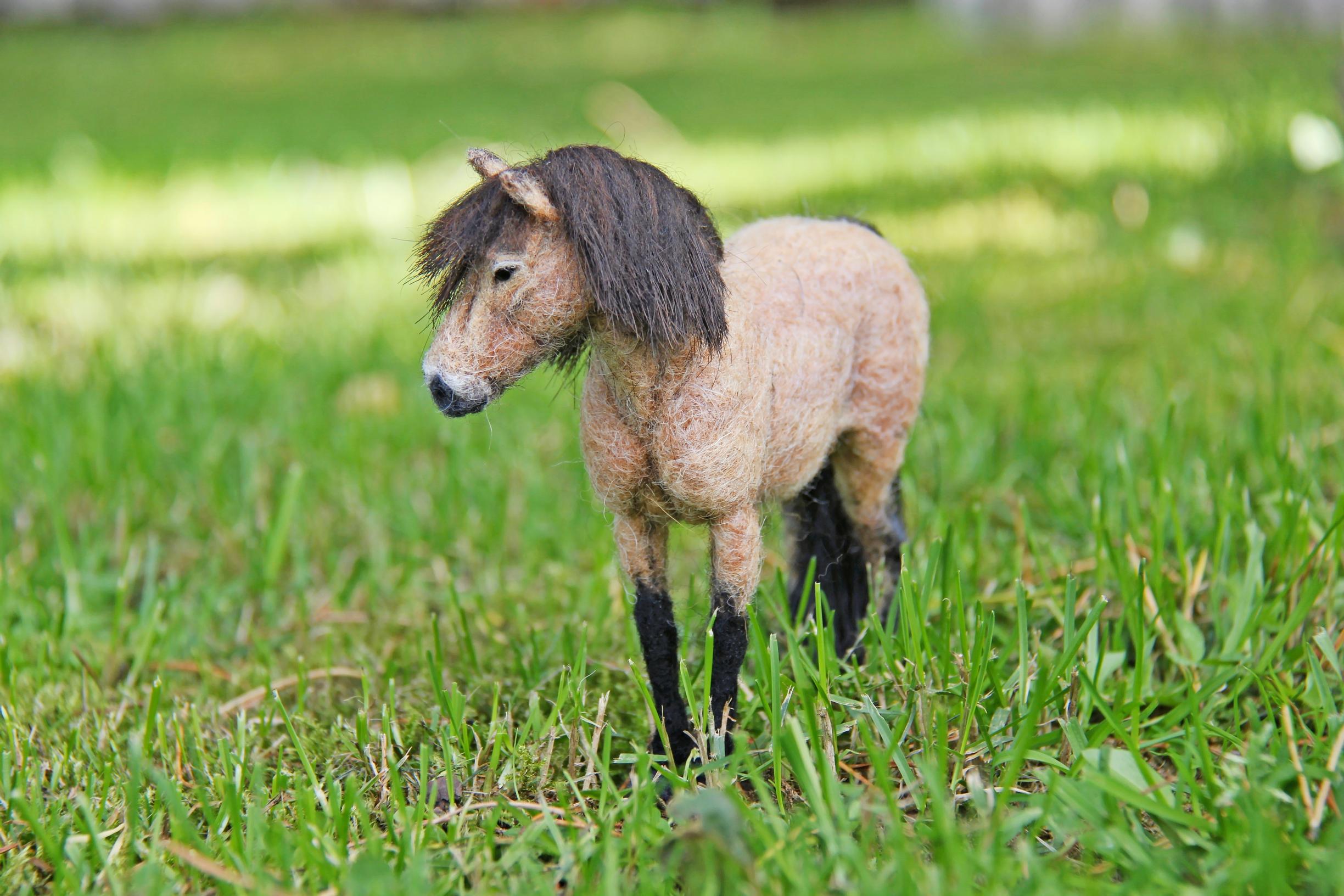
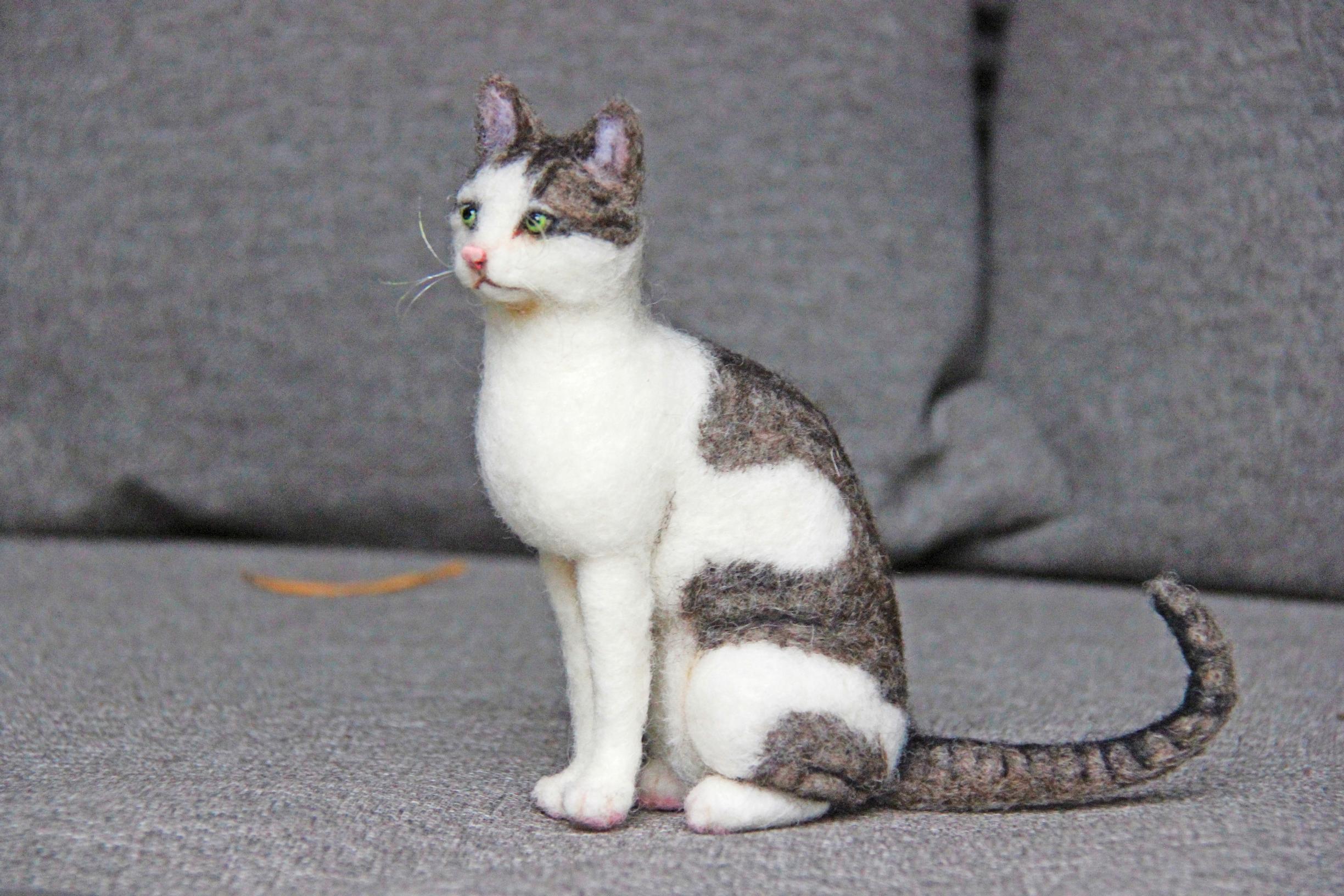
Can you make a felted animal entirely from dog fur?
Not entirely, although dog undercoat generally felts nicely. You need to add sheep’s wool to help it felt properly. Coarse, short hair is the hardest to work with, but it can still be used on the surface.
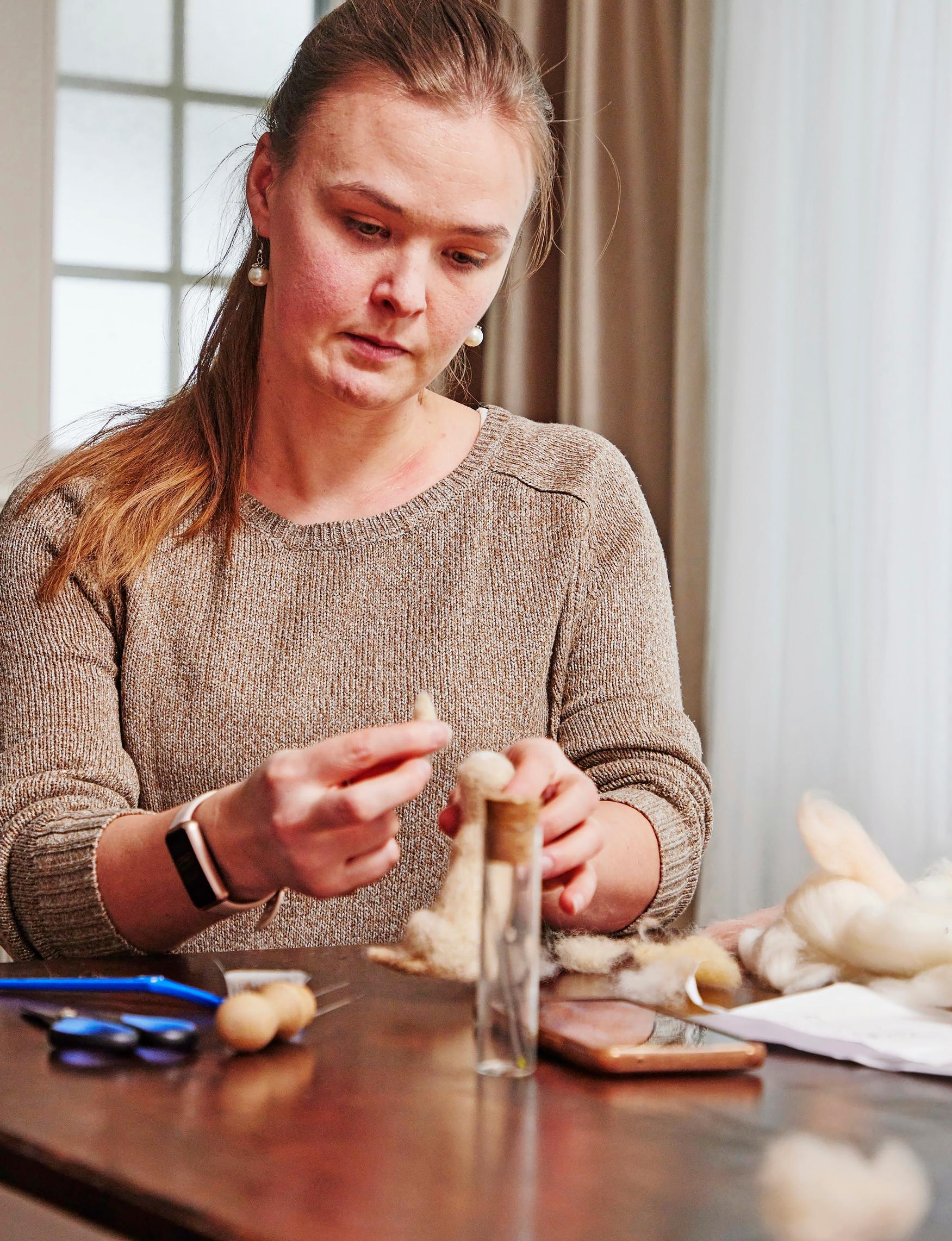
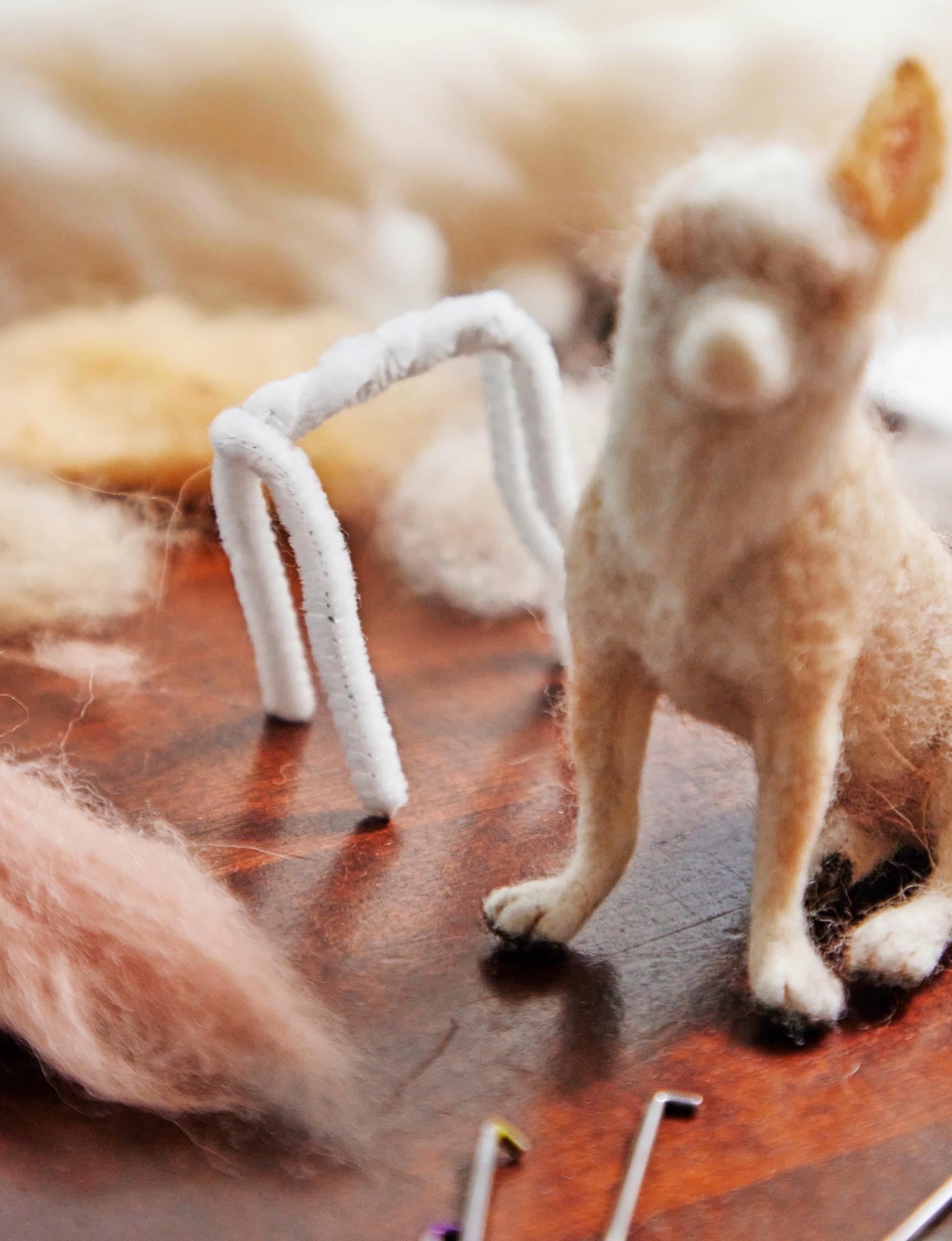
Your animals are remarkably expressive. How do you achieve that?
I’m very particular about details—maybe too particular. You can see color nuances best in natural light, and even gray has many shades. That’s why I have dozens of natural colors that I blend to find the perfect tone. I first felt carded wool over the wire frame, then I add merino wool on top. I usually work with one or two felting needles: a medium-coarse needle and a finer one. A reverse-barb needle gives the fur a fun, fluffy look.
If I worked straight through on a ten-centimeter piece, it might take around eight hours. Usually, I felt in two-hour sessions in the evenings while watching TV or during car rides. Every piece teaches me something new. These days, I also pay more attention to shading.
For the final touch, the felted animal gets its eyes, which I paint with acrylic paint. I usually sculpt the nose from air-dry clay and paint with the right shade. Then I add a bit of shine to the nose and eyes with clear nail polish. For cats’ whiskers, I use real natural fibers. Sometimes I craft details like collars from ribbons and wire.
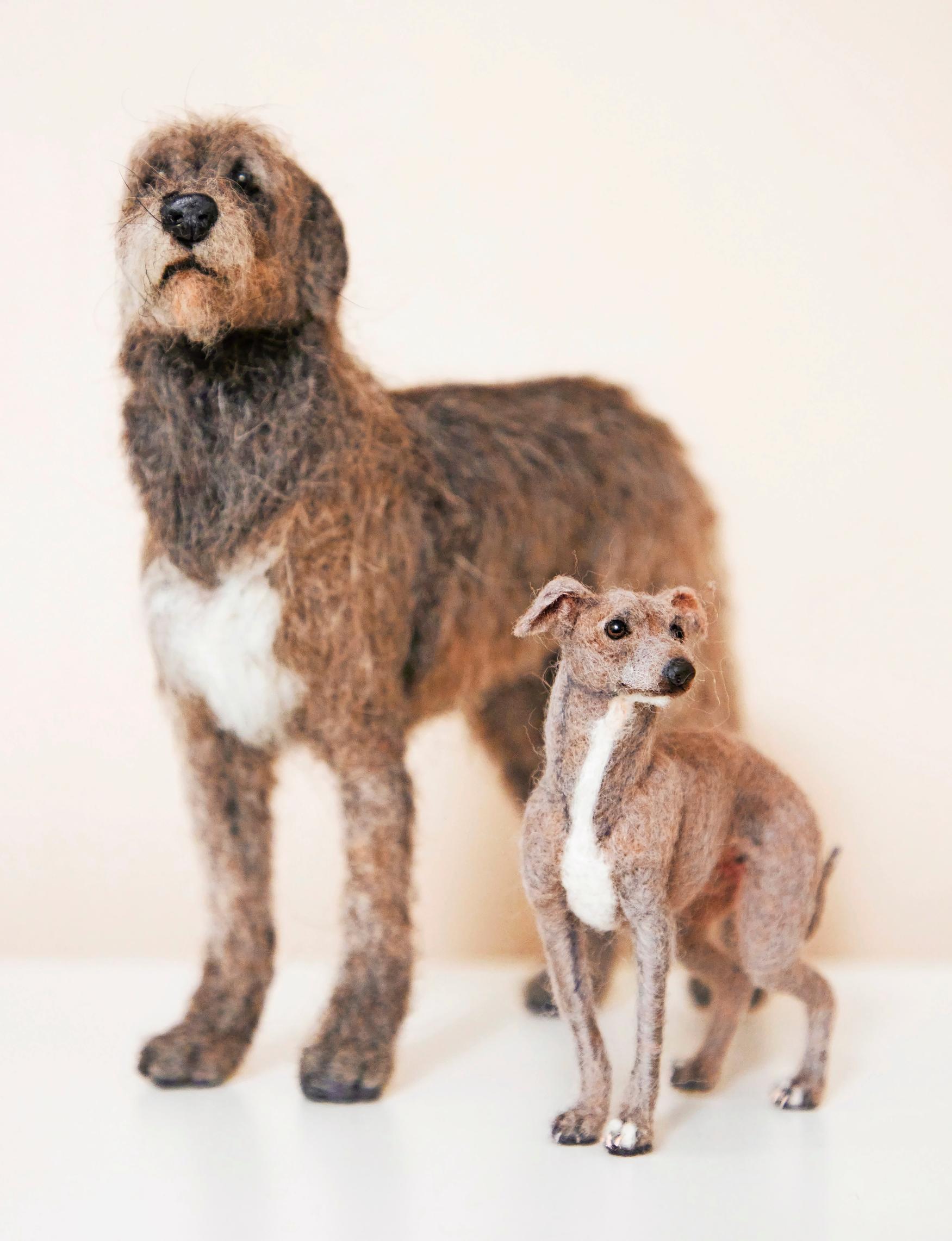
“I’m very particular about details—maybe too particular. I mix colors to find the perfect shade.”
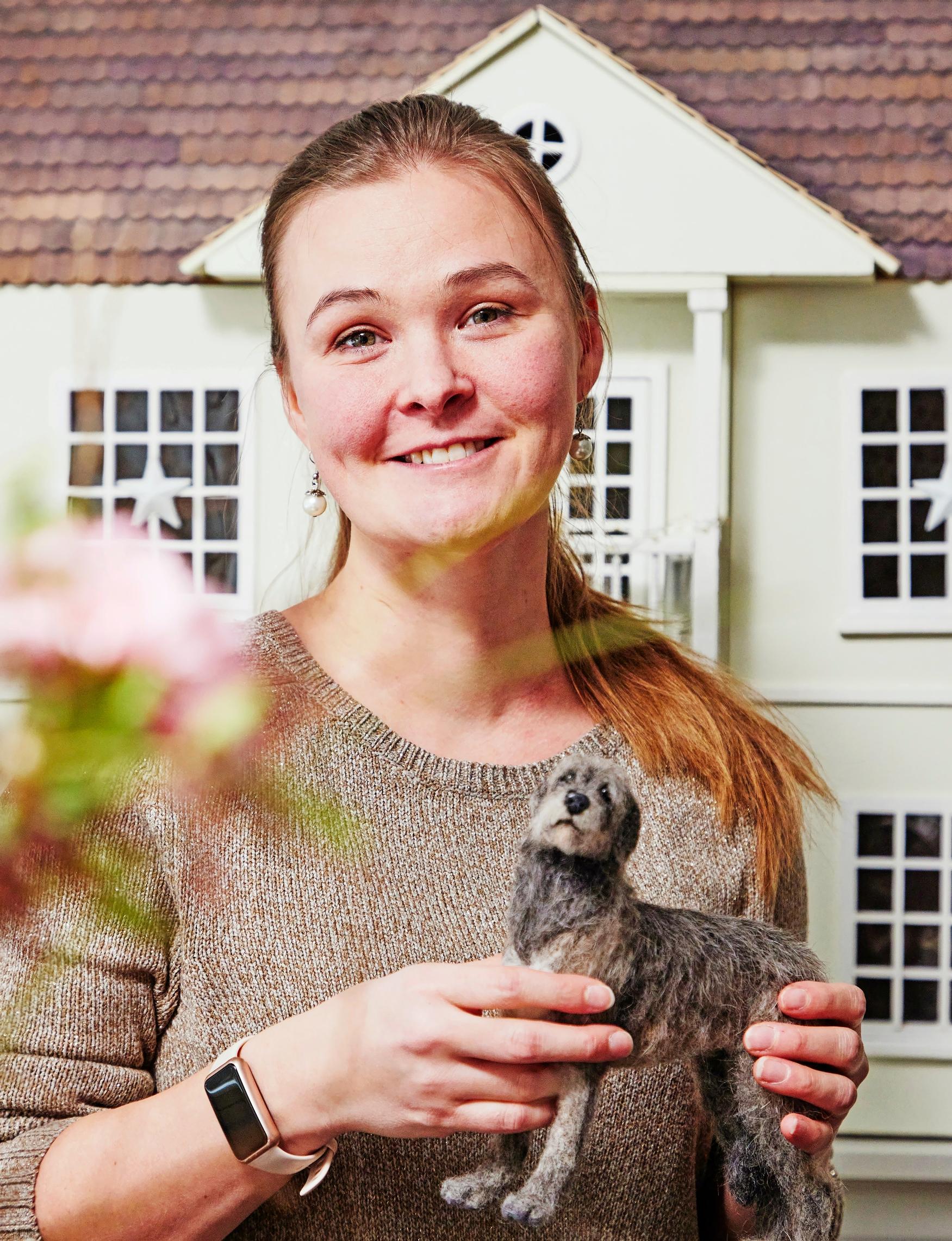
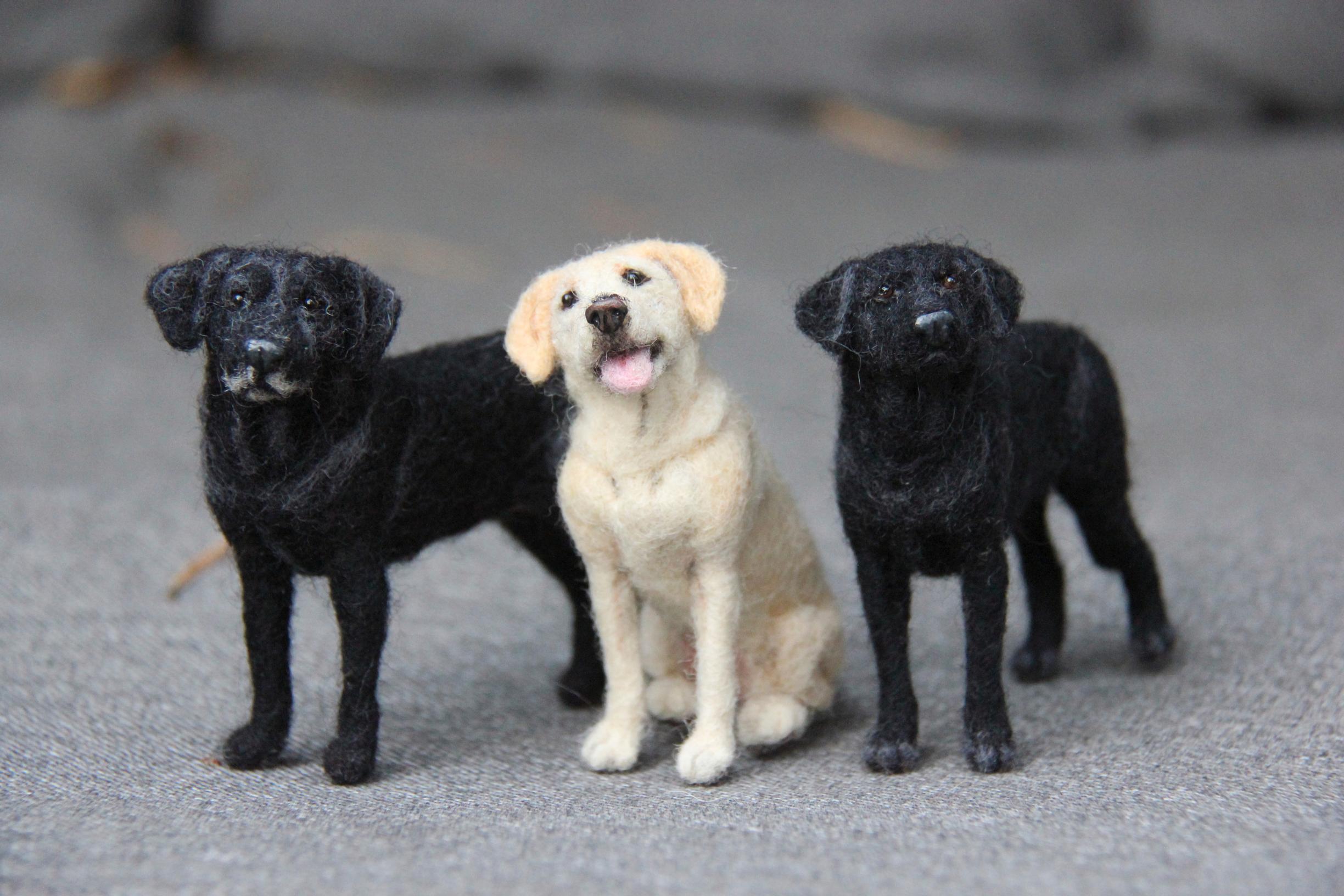
Do you have pets of your own?
I’m a big animal lover. For me, a home isn’t a home without a dog. A dog’s love and loyalty are irreplaceable. We’ve always had dogs, as far back as I can remember. I also enjoy more unusual pets. When I was growing up, we sometimes had sheep at home.
Right now, we have a White Shepherd called Impa and, in their terrariums, a peppered cockroach and a giant African snail. I love how this hobby shows that our love for a pet doesn’t end when it passes away; we still want to keep its memory alive.
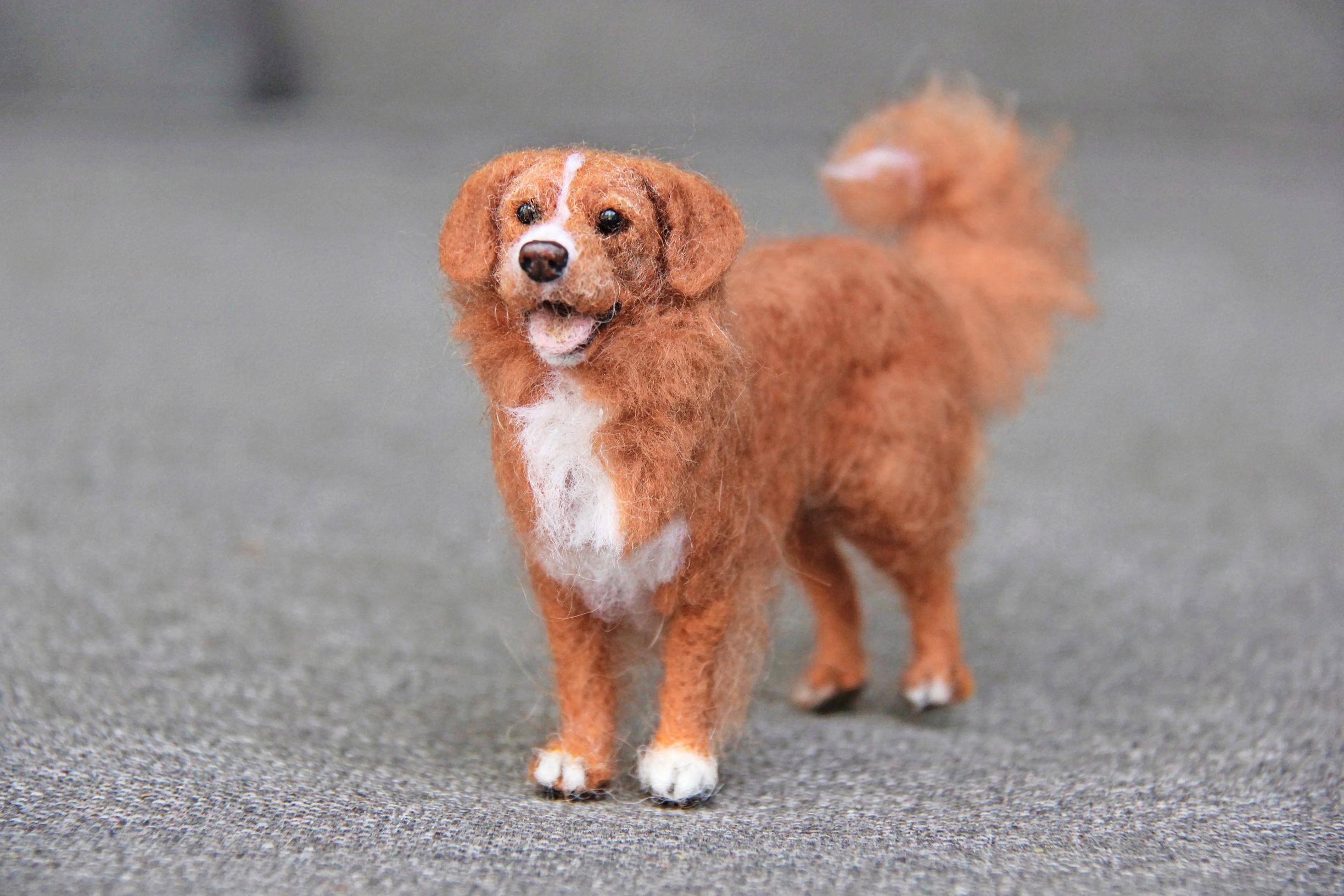
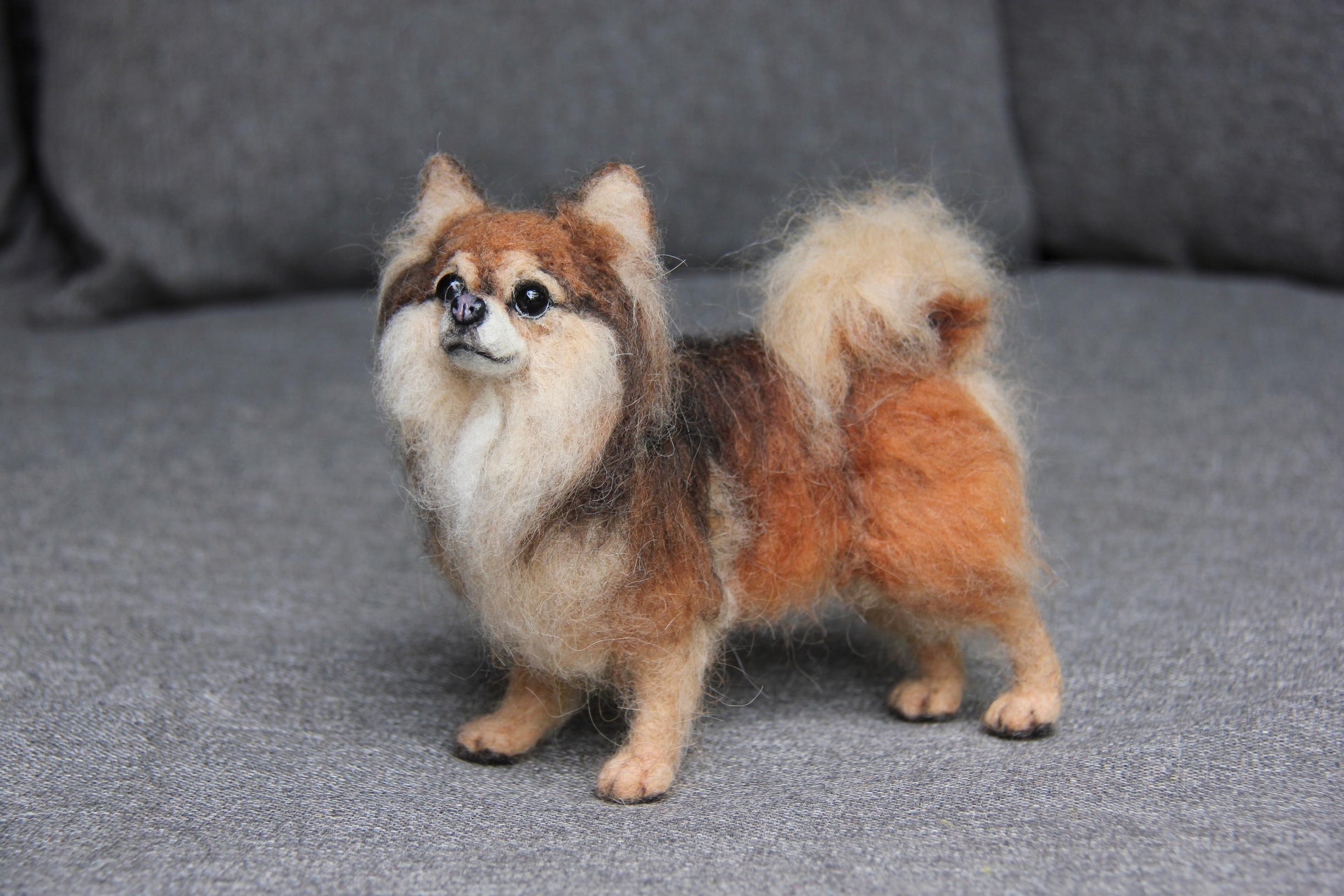
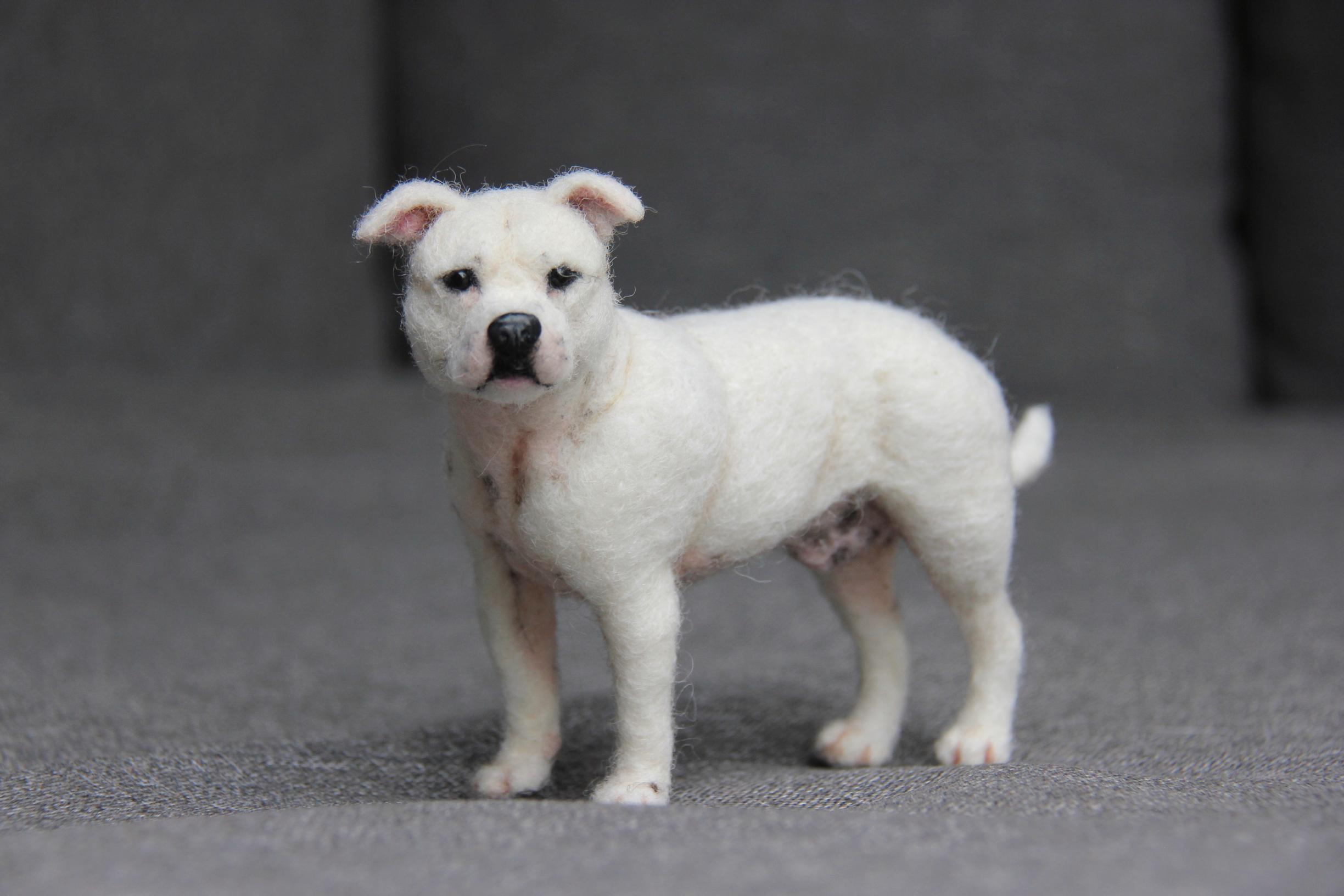
Emilia’s tips for learning how to needle-felt
- Beginners should choose a standard, rather coarse felting wool because it’s quick to work with. A medium-gauge felting needle is suitable for most projects. You can use styrofoam or firm foam as a base.
- It’s easier to shape your felting if you have photos of the subject taken from different angles.
- Be patient. At first, felting can seem tricky, but soon the hobby will draw you in.


